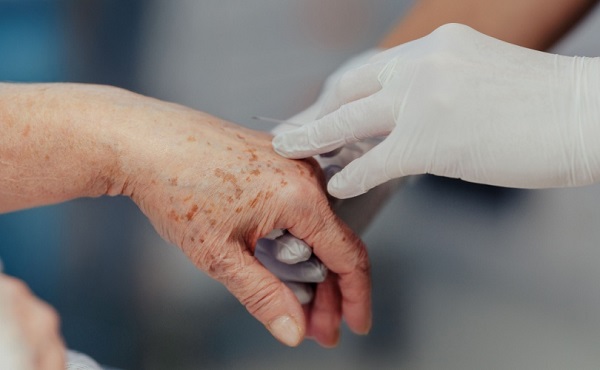Opinion
A few reasons why Molly Bannister Extension is needed, please help.

Guy Pelletier Regional Vice-President of Melcor Developments, at an information session held at the Bower Community Centre stated that if we remove the right of way now then the city would not be able to build the bridge, “When they need it”.
Melcor understands that the city will need the Molly Bannister Extension in the future but they want to make money. The kind of money, that 50 more houses backing onto Piper Creek, would bring.
Melcor is a business and that is understandable, but the city works for the people, the tax payers too. The Molly Bannister Extension has been polled, discussed, analyzed, studied, for decades and the majority of Red Deer residents have always supported it.
Granted there are a few who oppose it, and they have been vocal about it. Now we have big money involved so now there is a sense of urgency about it.
Let us talk about the trail. The trail is actually in the field on the west side of the creek. That would mean they would actually have to tear down trees to put the trail along the creek to go under the bridge. The trail is in the field across from this quarter. The trail would cross the road requiring a crosswalk with flashing lights.
So the option is have hikers, bikers and skaters wait 6 seconds for the flashing lights to come on or have thousands of drivers drive and extra 6 minutes every day.
Air pollution kills 4 million people every year. We encourage walking, transit etc. Now we want thousands of people to drive 6 more minutes every day so a few people don’t have to use a crosswalk.
The developer says removing the right of way will be more park space but in the next breath talks about replacing it with 50 houses backing onto Piper Creek. What these houses won’t be accessed by a road?
In Sunnybrook we have Selkirk Boulevard running along the woods. Deer cross it every day. Traffic slows down and stops for the animals. Even with all the traffic using as a short cut to avoid the 32 Street and 40 Avenue intersection.
If you remove the Molly Bannister Extension, you will most likely tie onto Selkirk Blvd at Springfield’s 3 way stop. Springfield is narrow and has a school but it has direct access to 32 Street. Selkirk is the most likely route as history shows.
We are talking about a 50 year old neighbourhood which was on the top neighbourhood list in Macleans magazine years ago. Now it has sidewalks which need to be weeded because the city cannot afford to maintain.

If you remove the Molly Bannister Extension, you will widen 32 Street to 6 lanes. Traffic will increase from 23,500 cars per day to over 40,000 when the population increases to 188,000. You are spending 3 million dollars repairing a shifted foundation wall on 32 St. near 47 Ave now at 4 lanes. How much will it cost to expand it to six lanes through Kin Canyon, Mountview school’s playground, etc.
You have mentioned a traffic circle at 40 Ave. and 19 St. at possibly 29-50 million dollars? A pedestrian bridge over 19 Street?
If you remove Molly Bannister Extension, what other unintended consequences will there be? Thousands upon thousands of vehicles travelling those 4 extra kilometres every day? For many, many years and decades? Isolating the animals in this wall less sanctuary, unable to roam?
Removing the Molly Bannister Extension is the first step. You know, as history shows, that 80% of the lots will request relaxations. Future traffic may require widening Selkirk Blvd, possibly hooking onto 32 Street at Spruce Drive.
Selective environmental concerns, affects us all, at one time or another. Years ago I would have been happy to remove the road alignment, but I changed with time. The traffic, death rate of animals crossing 32 Street, the noise, the alienation, the effects on seniors and children trying to cross 32 St. The homeless people leaving trash, needles, and furniture and invading our yards and stealing.
What will happen in the future, I do not know, you do not know, so why handicap future councils, future residents and future growth, when you don’t have to.
I will always remember Brian Mulrooney saying to John Turner; “No sir, you had an option, you could have said no.”
The city laid out 2 options but there are other options. You could just say no.
Unfortunately, the impression is that there are councillors who are so set in their ways, determined to remove the Molly Bannister Extension, that facts, reality, empathy, and options will have no effect.

So my question is, given that the majority of Red Deer residents as shown in the largest number of responses the city had received, support the Molly Banister Extension, will council represent the majority or represent the select few?
Thank you.
Alberta
How one major media torqued its coverage – in the take no prisoners words of a former Alberta premier

(Editor’s note: I was going to write on the media’s handling of the Alberta government’s decision to order striking teachers back to work and invoke Section 33 of the Charter in doing so. But former Alberta premier Jason Kenney provided such a fulsome dissection of an absence of balance and its consequences in terms of public trust on X that I asked him if The Rewrite could publish it. He said yes and here it is – Peter Menzies.)
By Jason Kenney
This ”story” is an object lesson for why trust in legacy media has plummeted, and alt right media audiences have grown.
”story” is an object lesson for why trust in legacy media has plummeted, and alt right media audiences have grown.
Here CTV “digital news producer” @AngeMAmato (she/her) writes a story about “experts” calling the use of Sec. 33 “a threat to democracy.”
Who are the experts?
A left wing academic, and a left wing activist. The latter, Howard Sapers, is a former Liberal MLA (which the article does not mention) for a party that is so marginal, it has not elected an MLA in over a decade.
For good measure CTV goes on to quote two left wing union bosses, who of course are predictably outraged.
A more accurate headline would be “Four people on the left angry about use of Notwithstanding Clause.” Which is the opposite of news. It’s the ultimate “Dog Bites Man” non-story.
Did the CTV producer make any effort to post a balanced story by asking for comment from academics / lawyers / think tanks who support use of Sec. 33? Did she call the @CDNConstFound or the @MLInstitute’s Judicial Power Project? Did she attempt to reach any of these four scholars, who just published their views in a @nationalpost op-ed last week?
Did she have an editor who asked why her story lacked any attempt at balance?
And did anyone at CTV pause for a moment to ponder how tendentious it is to accuse a democratically elected legislature of acting “undemocratically” by invoking a power whose entire purpose is to ensure democratic accountability?
She provides some historical context about prior use of Sec. 33. Why does that context not include the fact that most democratically elected provincial governments (including Alberta under Premier Lougheed, and Saskatchewan under NDP Premier Blakeney) agreed to adopt the Charter *only if* it included the Notwithstanding Clause to allow democratically elected Legislatures to ensure a democratic check and balance against the abuse of undemocratic, unaccountable judicial power?
Why does she not mention that for the first 33 years of the Charter era, the Canadian Courts ruled that there was no constitutionally protected right to strike?
Why doesn’t she quote an expert pointing out that Allan Blakeney defended the Saskatchewan Legislature’s 1986 use of Sec. 33 to end a strike as “a legitimate use of the Clause?” Or refer to Peter Lougheed’s 1987 commitment to use Sec. 33 if the courts invented a right to strike?
Many thoughtful criticisms can be levelled against Section 33. Being undemocratic is not one of them.
So why do we see so much agitprop like this masquerading as news from so many legacy media outlets?
IMO, there are two possible answers:
1) They are blind to their own biases; and / or
2) People like @AngeMAmato believe that they have a moral imperative to be “progressive journalists” which trumps the boringly old fashioned professional imperative to be objective and balanced.
Whatever the reason, “journalists” like this have no one to blame but themselves for growing distrust of legacy media, and the consequent emergence of non traditional media platforms.
 |
|
Invite your friends and earn rewards
Crime
Canada Seizes 4,300 Litres of Chinese Drug Precursors Amid Trump’s Tariff Pressure Over Fentanyl Flows
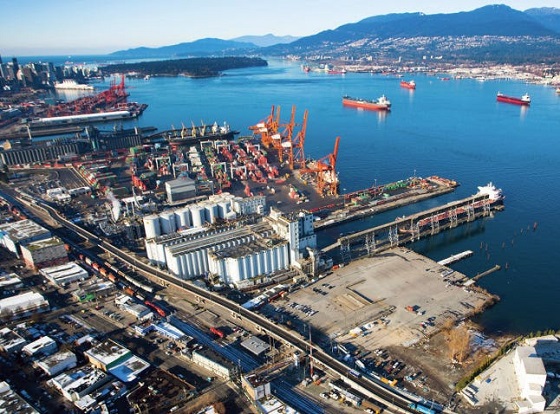
In what appears to be the second-largest Chinese precursor-chemical seizure in British Columbia in the past decade, Canadian border and police officials announced they intercepted more than 4,300 litres of chemicals used to manufacture fentanyl and other synthetic drugs at a notoriously troubled port in Delta, B.C.
The announcement of a seizure that occurred in May 2025 comes amid President Donald Trump’s continuing pressure on Ottawa to crack down on fentanyl trafficking in the province — which U.S. officials say has become a key production and shipment point for Chinese and Mexican traffickers.
The seizure — announced jointly by the Canada Border Services Agency (CBSA) and the RCMP — underscores the scale and persistence of global trafficking networks funnelling illicit materials into Canada’s drug markets.
According to the agencies, border officers examined two marine containers that arrived from China in mid-May, both bound for Calgary, Alberta. Acting on intelligence developed by CBSA’s Pacific Region, officers discovered 3,600 litres of 1,4 Butanediol, a key ingredient for producing GHB, often known as the “date-rape drug”; 500 litres of Propionyl Chloride, a chemical precursor used to synthesize fentanyl; and 200 litres of Gamma Butyrolactone (GBL), another controlled intoxicant.
The chemicals were concealed inside 60 clear jugs and 20 blue drums within the containers. Investigators believe the shipment was intended for use in clandestine drug laboratories. The RCMP confirmed that an investigation into the importation network remains ongoing.
The seizure comes amid growing concern about Canada’s port security, particularly in Metro Vancouver, where experts and local officials say criminal networks are exploiting gaps in federal enforcement.
The Delta seizure follows a series of major CBSA operations targeting precursor chemicals at Pacific ports. In May 2022, CBSA officers in the Metro Vancouver District examined a container from China declared as “toys” and discovered 1,133 kilograms of the fentanyl-precursor chemical Propionyl Chloride, with the potential to produce more than a billion doses of fentanyl.
Public Safety Canada also reported that in the first half of 2021, CBSA seized more than 5,000 kilograms of precursor chemicals, compared with just 512 kilograms in 2020 — reflecting what officials called a “dramatic escalation” in attempts to smuggle fentanyl inputs into the country.
In 2023, the City of Delta released a report highlighting major vulnerabilities at port terminal facilities, warning that there is “literally no downside” for organized criminals to infiltrate port operations. The report noted that British Columbia’s provincial threat assessment rated ports as highly susceptible to corruption and organized-crime infiltration.
At the time, Delta Mayor George Harvie called the lack of a dedicated national port-policing force “a threat to national security.” In comments to the Canadian Press, Harvie said that while Canada’s ports fall under federal jurisdiction, the “total absence of uniformed police at the facilities makes them obvious targets for criminal elements — from Mexican drug cartels to biker gangs.”
“We’re witnessing a relentless flow of illegal drugs, weapons and contraband into Canada through our ports, and that threatens our national security,” Harvie said.
The Port of Vancouver complex, which includes major terminals in Delta, Surrey, and Vancouver, handles roughly three million containers annually, with millions more expected as port expansion plans move forward.
The Delta report reiterated how difficult it has become to police these sprawling operations since the Ports Canada Police were disbanded in 1997. More than a quarter-century later, Harvie said, the consequences of that decision are now “alarmingly clear.”
The CBSA announcement today comes as U.S. President Donald Trump has imposed tariffs on Canadian exports, accusing Ottawa of failing to interdict the flow of fentanyl and precursor chemicals trafficked through British Columbia ports. Washington has repeatedly pressed Canada to strengthen port enforcement and anti-money-laundering controls, citing the West Coast’s role in China- and Mexico-linked trafficking networks.
Simultaneously, in trade negotiations with Beijing, Mr. Trump announced a reduction in tariffs tied to the fentanyl supply chain — raising concern that Washington has eased pressure on China, the primary source of finished fentanyl now responsible for hundreds of thousands of overdose deaths across North America.
Subscribe for free to receive new posts and support my work.
For the full experience, please upgrade your subscription and support a public interest startup.
We break international stories and this requires elite expertise, time and legal costs.
-
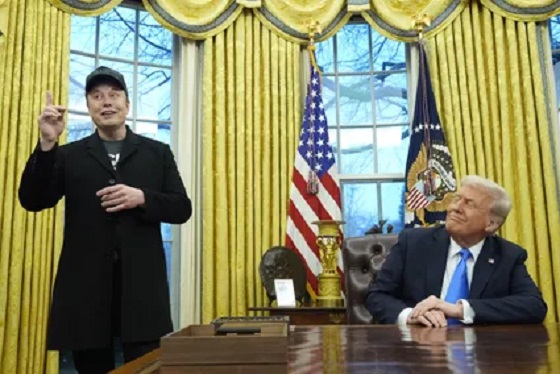
 Internet2 days ago
Internet2 days agoMusk launches Grokipedia to break Wikipedia’s information monopoly
-

 Business1 day ago
Business1 day agoCanada heading into economic turbulence: The USMCA is finished and Canadian elbows may have started the real fight
-

 Business2 days ago
Business2 days agoBill Gates walks away from the climate cult
-
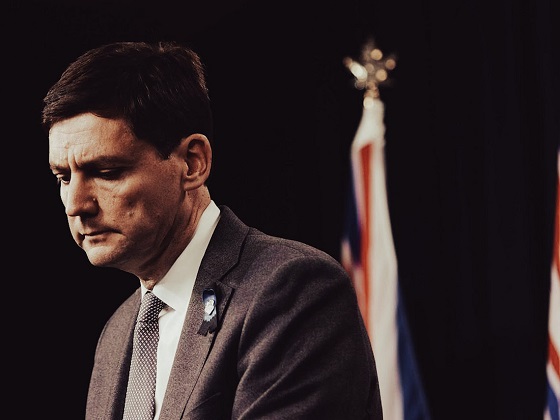
 Opinion2 days ago
Opinion2 days agoBritish Columbians protest Trump while Eby brings their province to its knees
-

 National1 day ago
National1 day agoCanada’s NDP is now calling women ‘non-males’
-

 National1 day ago
National1 day agoCanadian MPs order ethics investigation into Mark Carney’s corporate interests
-
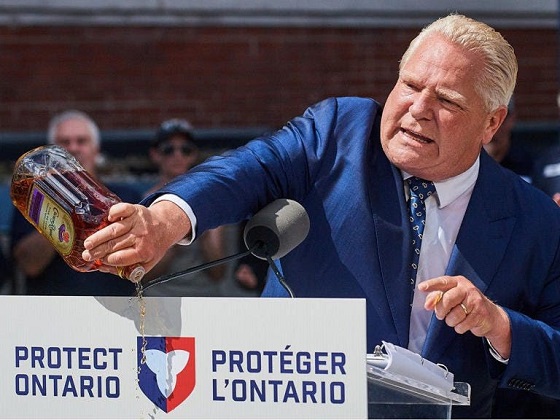
 Business1 day ago
Business1 day agoFord’s Liquor War Trades Economic Freedom For Political Theatre
-
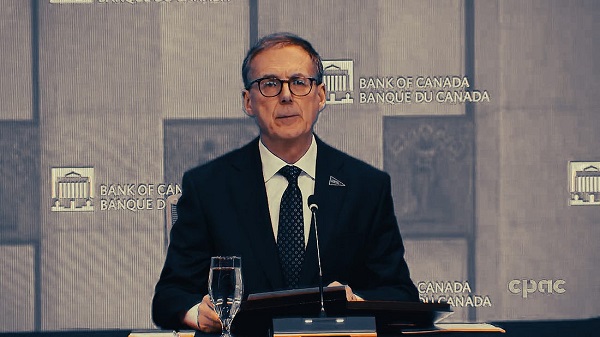
 Banks1 day ago
Banks1 day agoBank of Canada Cuts Rates to 2.25%, Warns of Structural Economic Damage






